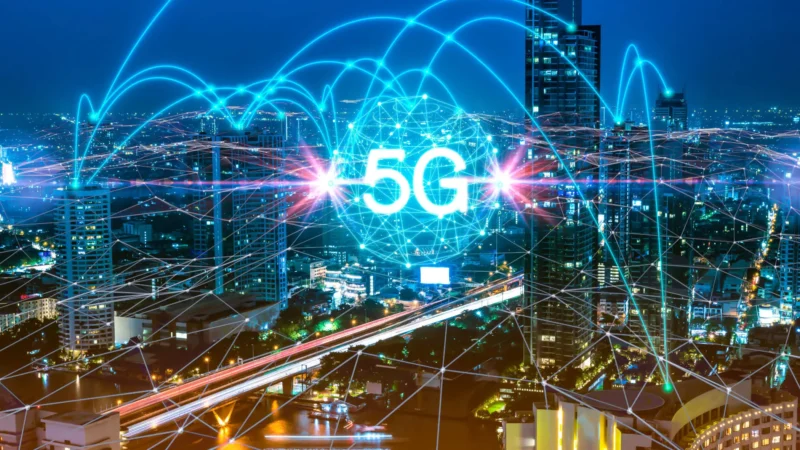
As we stand on the brink of a technological revolution, 5G is set to transform the way we connect and interact with the world around us. This new generation of connectivity promises to deliver unprecedented speeds, ultra-low latency, and the capacity to support a massive number of devices simultaneously. But what lies beyond 5G? This article explores the evolution of mobile networks, the key features and benefits of 5G, its challenges, and the exciting future that awaits us beyond this groundbreaking technology.
What is 5G?
5G, or the fifth generation of mobile network technology, is designed to significantly enhance the speed and responsiveness of wireless networks. It achieves this by utilizing higher frequency bands, advanced antenna technology, and increased bandwidth. This allows for faster data transfer rates, reduced latency, and the ability to connect more devices within a given area.
The Evolution of Mobile Networks
1G to 4G
The journey from 1G to 4G has been marked by significant advancements in mobile technology. Each generation has brought about improvements in speed, capacity, and connectivity. 1G introduced us to analog voice communication, while 2G brought digital voice and basic data services. 3G offered faster data speeds and mobile internet, paving the way for the smartphone revolution. 4G, or LTE, took things further with high-speed internet, enabling streaming services and sophisticated mobile applications.
5G Technology Overview
5G is not just an incremental improvement over 4G; it represents a paradigm shift. With speeds up to 100 times faster than 4G, latency as low as 1 millisecond, and the capacity to support over a million devices per square kilometer, 5G is set to revolutionize industries and everyday life.
Beyond 5G: What’s Next?
While 5G is still being rolled out globally, research and development are already underway for 6G and other future networks. These next-generation technologies aim to build on the foundation laid by 5G, offering even higher speeds, lower latency, and more advanced capabilities.
Key Features of 5G Technology
Ultra-low Latency
One of the standout features of 5G is its ultra-low latency, which is critical for applications requiring real-time responsiveness, such as autonomous vehicles, remote surgery, and augmented reality.
High Data Speeds
5G can achieve data speeds of up to 10 Gbps, which means downloading a high-definition movie in seconds. This is made possible by using higher frequency bands and advanced modulation techniques.
Massive Device Connectivity
With the proliferation of IoT devices, 5G’s ability to connect millions of devices per square kilometer is crucial. This feature supports the growth of smart cities, industrial automation, and other IoT applications.
Enhanced Reliability
5G networks are designed to be more reliable, ensuring consistent performance even in densely populated areas and during peak usage times. This reliability is essential for mission-critical applications and services.
Benefits of 5G Technology
Improved Communication
5G will enable faster and more reliable communication, enhancing everything from video calls to online gaming. The increased bandwidth and lower latency will provide a smoother, more responsive experience.
Smart Cities and IoT
The connectivity offered by 5G is essential for the development of smart cities. From traffic management to energy consumption, 5G will enable cities to operate more efficiently and sustainably.
Healthcare Advancements
In healthcare, 5G can support telemedicine, remote patient monitoring, and even remote surgery. The high speeds and low latency ensure that medical professionals can provide high-quality care from a distance.
Enhanced Mobile Experiences
For consumers, 5G will transform mobile experiences, enabling ultra-high-definition video streaming, virtual reality, and augmented reality applications on mobile devices.
Challenges and Limitations of 5G
Infrastructure Requirements
Deploying 5G requires significant infrastructure investment, including the installation of new base stations and antennas. This can be a challenge, particularly in rural and underserved areas.
Security Concerns
With increased connectivity comes heightened security risks. Protecting the vast amount of data transmitted over 5G networks is a critical concern that requires robust cybersecurity measures.
Economic Considerations
The cost of deploying 5G infrastructure and devices can be prohibitive. This is a significant barrier to widespread adoption, particularly in developing countries.
Beyond 5G: The Future of Connectivity
6G and Future Networks
6G, the successor to 5G, is expected to offer even faster speeds, lower latency, and more advanced capabilities. While still in the early stages of development, 6G promises to push the boundaries of what’s possible with wireless communication.
Innovations in Connectivity
Future networks will leverage advancements in artificial intelligence, edge computing, and quantum networking to provide even more efficient and powerful connectivity solutions.
Potential Applications
The potential applications of future networks are vast, ranging from advanced robotics and automation to immersive virtual experiences and beyond. These technologies will continue to transform industries and everyday life in ways we can only begin to imagine.
Impact on Industries
Manufacturing
In manufacturing, 5G will enable smart factories with advanced automation, real-time monitoring, and predictive maintenance. This will lead to increased efficiency and reduced downtime.
Healthcare
The healthcare industry will benefit from improved telemedicine, remote surgery, and real-time patient monitoring, enhancing the quality of care and making healthcare more accessible.
Entertainment
5G will revolutionize the entertainment industry, enabling new forms of media consumption such as augmented reality, virtual reality, and ultra-high-definition streaming.
Transportation
In transportation, 5G will support the development of autonomous vehicles, smart traffic management systems, and enhanced logistics, making travel safer and more efficient.
Global Deployment and Adoption
Leading Countries
Countries like South Korea, China, and the United States are leading the way in 5G deployment, with extensive networks already in place and more on the horizon.
Challenges in Developing Nations
Developing nations face significant challenges in deploying 5G due to economic constraints and infrastructure limitations. Bridging this digital divide is essential for global progress.
Global Standards and Policies
International standards and policies are crucial for the successful deployment and operation of 5G networks. Harmonized regulations ensure compatibility and interoperability across borders.
Technological Innovations Driving Future Networks
Artificial Intelligence
AI will play a crucial role in optimizing network performance, managing data traffic, and enhancing security in future networks.
Edge Computing
Edge computing will bring data processing closer to the source, reducing latency and improving the efficiency of network operations.
Quantum Networking
Quantum networking, still in its nascent stages, promises to revolutionize connectivity with unprecedented speeds and security.
Conclusion
The advent of 5G marks a significant milestone in the evolution of mobile networks, bringing with it transformative changes in connectivity, communication, and industry applications. As we look beyond 5G to the future of 6G and other advanced technologies, the possibilities are limitless. Embracing these innovations will pave the way for a more connected
